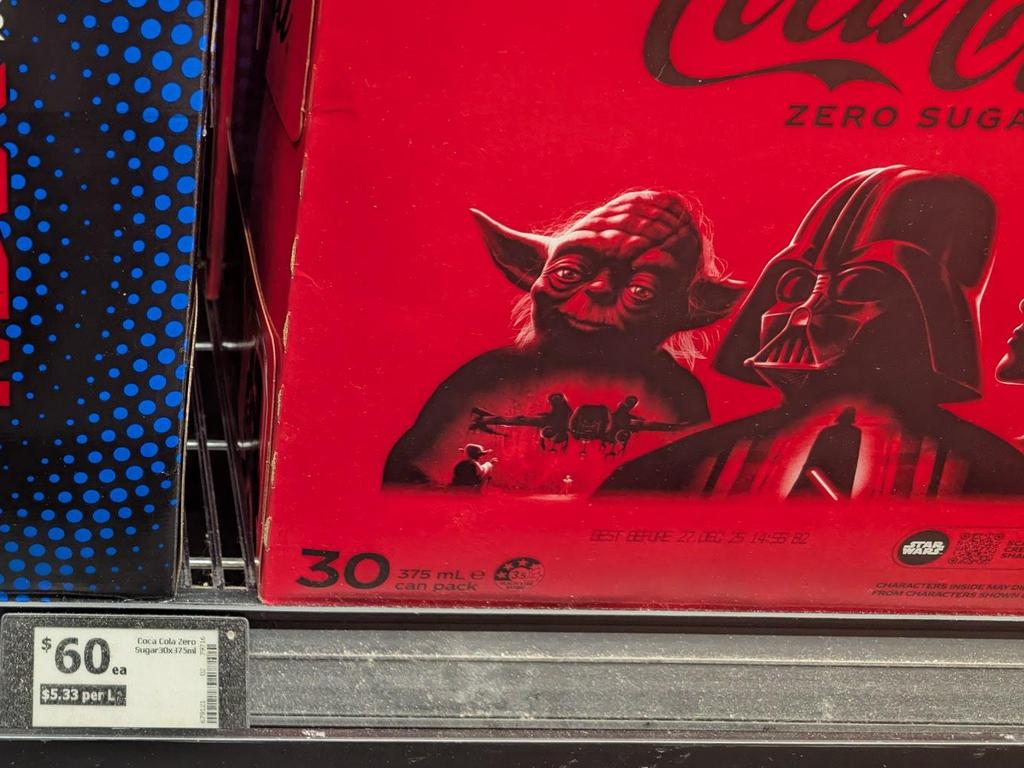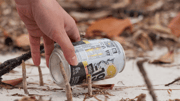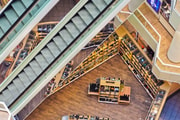
The recent uproar over a $60 Coca-Cola carton at a Woolworths tells a story that goes far deeper than supermarket sticker shock. For anyone who remembers when a bottle of Coke cost the same as a daily newspaper, these prices represent one of the most dramatic transformations in consumer goods pricing Australia has ever seen.
The photo that sparked nationwide outrage showed a 30-pack of Coke Zero with an eye-watering $60 price tag, working out to $2 per can.
As one social media user aptly put it: 'It's official, beer is cheaper.' But how did we get to the point where a soft drink costs more than an alcoholic beverage that carries hefty government taxes?
When Coke was cheaper than a tram ticket
The story of Coca-Cola pricing is one of the most remarkable in business history. From 1886 to 1959, a bottle of Coca-Cola cost exactly five cents—the same price for more than 70 years. This price remained stable through World War I, the Great Depression, World War II, and countless other economic upheavals.
'For just $0.05, you could purchase a 6.5-ounce Coke for the same price for years to come'
To put this in perspective, that 1886 nickel would be worth about $1.75 in today's money, making early Coca-Cola incredibly affordable even by modern standards.
The company was so committed to the five-cent price that they even approached the US Treasury Department in 1953 asking them to mint a 7.5-cent coin, and briefly considered putting empty bottles in vending machines to effectively raise prices.
The price explosion decades
Once that 70-year price dam burst in 1959, the floodgates opened. By the 1960s, Coke cost around 25 cents, jumping to 40 cents in the 1970s, 62 cents in the 1980s, and 87 cents by the 1990s. When adjusted for inflation, Coca-Cola has never been as expensive as it is today.
Price progression through the decades
1886-1959: 5 cents (same price for 73 years)
1960s: ~25 cents
1970s: ~40 cents
1980s: ~62 cents
1990s: ~87 cents
2000s: ~$1.01 (2-litre bottle)
2010s: ~$1.37 (2-litre bottle)
2025: $2.00 per can in some stores
Why beer is now the bargain option
The current pricing paradox becomes even more striking when you consider the tax burden. Beer carries alcohol taxes of 40-60 per cent, yet a 30-pack of Great Northern Lager costs around $50-52 at major bottle shops like BWS and Liquorland—less than the controversial $60 Coke pack.
This reversal would have seemed impossible to previous generations. Your grandfather could buy a beer and a Coke for roughly the same price, but the beer came with social restrictions and age limits while Coke was marketed as the wholesome family drink.
Did you know?
Did you know?
In 1950, Coca-Cola owned over 85 per cent of America's 460,000 vending machines, worth an estimated $286-900 million in 1992 dollars—one reason they were so reluctant to change their nickel pricing system.
The perfect excuse to break a costly habit
For many Australians over 60, this pricing shock might actually be a blessing in disguise. Regular soft drink consumption has been linked to increased risks of diabetes, heart disease, and bone density loss—concerns that become more significant with age.
As one commenter on the original social media post noted: 'This is trash food and it should cost this much so people don't buy it.' While the language is blunt, the health implications are real.
A single can of regular Coke contains about 39 grams of sugar—more than the recommended daily intake for adults.
The pricing pressure is already changing behaviour. Many consumers report they now only buy soft drinks when they're on special, treating them as occasional treats rather than everyday purchases.
Smart shopping strategies for the price-conscious
Beat the soft drink price surge
- Shop loss-leader specials at competing supermarkets
- Buy only when major brands go on half-price promotion
- Consider home-brand alternatives (often 50-70 per cent cheaper)
- Stock up during seasonal sales (Christmas, Australia Day)
- Try sparkling water with a splash of fruit juice as an alternative
- Check unit pricing—sometimes smaller packs offer better value
Supermarkets often use popular items as 'loss leaders' - selling them below cost to attract customers, so patience can pay off. The current $60 pricing appears to be isolated to a single Brisbane Metro store, with most Woolworths stores selling the same 30-pack for $50.
Woolworths Metro stores typically charge premium prices due to their convenient CBD and transit locations, targeting customers who prioritise convenience over cost. It's worth remembering that different store formats within the same chain can have vastly different pricing structures.
A reality check on grocery inflation
This Coca-Cola controversy reflects broader grocery inflation concerns that particularly impact households on fixed incomes. The absolute price of Coca-Cola has increased by 5,280 per cent since 1970, with $2.64 of that increase occurring in just the last 53 years.
The good news? Unlike many grocery staples, soft drinks remain optional purchases. Unlike bread, milk, or fresh produce, you can simply choose not to buy overpriced fizzy drinks without impacting your nutritional needs.
The community weighs in
The original social media post generated hundreds of comments, with many sharing memories of when soft drink was affordable family fare. Some questioned whether this pricing represents genuine cost pressures or strategic pricing to maximise profits from impulse purchases.
Others pointed out practical considerations: the $60 cartons were limited edition Star Wars-themed cans, which might justify premium pricing for collectors. However, even the regular $50 pricing at most stores represents a significant jump from previous years.
What's your experience with grocery price inflation? Have you changed your shopping habits due to soft drink prices, or found effective ways to keep costs down? The conversation continues in our community, where shared wisdom often proves more valuable than any individual bargain hunt.
Original Article
https://www.news.com.au/lifestyle/f...fa64a7068ea545b8f9fb21db07fff6?from=rss-basic
Fixed price of Coca-Cola from 1886 to 1959—Wikipedia
Cited text: According to the Coca-Cola Company's self-published history, "The Chronicle of Coca-Cola," "It was pronounced 'excellent'...
Excerpt: The story of Coca-Cola pricing is one of the most remarkable in business history.
https://en.wikipedia.org/wiki/Fixed_price_of_Coca-Cola_from_1886_to_1959
Fixed price of Coca-Cola from 1886 to 1959—Wikipedia
Cited text: Between 1886 and 1959, the price of a 6.5 US fl oz (190 mL) glass or bottle of Coca-Cola was set at five cents, or one nickel, and remained fixed with...
Excerpt: The story of Coca-Cola pricing is one of the most remarkable in business history.
https://en.wikipedia.org/wiki/Fixed_price_of_Coca-Cola_from_1886_to_1959
Fixed price of Coca-Cola from 1886 to 1959—Wikipedia
Cited text:
Excerpt: The story of Coca-Cola pricing is one of the most remarkable in business history.
https://en.wikipedia.org/wiki/Fixed_price_of_Coca-Cola_from_1886_to_1959
Fixed price of Coca-Cola from 1886 to 1959—Wikipedia
Cited text: The fact that the price of the drink was able to remain the same for over seventy years is especially significant considering the events that occurred...
Excerpt: This price remained stable through World War I, the Great Depression, World War II, and countless other economic upheavals.
https://en.wikipedia.org/wiki/Fixed_price_of_Coca-Cola_from_1886_to_1959
Fixed price of Coca-Cola from 1886 to 1959—Wikipedia
Cited text: The Coca-Cola Company sought ways to increase the five cent price, even approaching the U.S. Treasury Department in 1953 to ask that they mint a 7.5 c...
Excerpt: The company was so committed to the five-cent price that they even approached the US Treasury Department in 1953 asking them to mint a 7…
https://en.wikipedia.org/wiki/Fixed_price_of_Coca-Cola_from_1886_to_1959
Fixed price of Coca-Cola from 1886 to 1959—Wikipedia
Cited text: Reluctant to double the price to a dime—the next price achievable with a single coin—they were forced to keep the price of Coca-Cola at five cents...
Excerpt: The company was so committed to the five-cent price that they even approached the US Treasury Department in 1953 asking them to mint a 7…
https://en.wikipedia.org/wiki/Fixed_price_of_Coca-Cola_from_1886_to_1959
Price of Coca-Cola from 1960-1990 by Abby Rudd on Prezi
Cited text: Coca-Cola Price 110 105 100 95 90 1990's = $.87 85 80 75 70 65 60 1980's = $.62 Cents 55 50 45 40 1970's = $.40 35 30 25 1960's = ...
Excerpt: By the 1960s, Coke cost around 25 cents, jumping to 40 cents in the 1970s, 62 cents in the 1980s, and 87 cents by the 1990s.
Price evolution of Coca-cola in the the United States
Cited text: When we adjust for inflation, we see that the price of coca-cola also peaked in 2023, when it cost $2.83 (in today's money), and was at its lowest in ...
Excerpt: When adjusted for inflation, Coca-Cola has never been as expensive as it is today.
https://moneynotmoney.com/historical-price-of-coca-cola-in-united-states/
Bottleshop prices—shopping | CHOICE
Cited text: For the beer and spirits compared, Coles' Liquorland was 14 per cent more expensive than their 1st Choice outlet, while Woolworths Liquor was 15 per cent dearer ...
Excerpt: Beer carries alcohol taxes of 40-60 per cent, yet a 30-pack of Great Northern Lager costs around $50-52 at major bottle shops like BWS and Liquorland
https://www.choice.com.au/shopping/everyday-shopping/supermarkets/articles/bottleshop-prices
Bottleshop prices—shopping | CHOICE
Cited text: For the five popular beers we compared, Dan Murphy's had the cheapest average prices, followed by IGA.
Excerpt: Beer carries alcohol taxes of 40-60 per cent, yet a 30-pack of Great Northern Lager costs around $50-52 at major bottle shops like BWS and Liquorland
https://www.choice.com.au/shopping/everyday-shopping/supermarkets/articles/bottleshop-prices
Fixed price of Coca-Cola from 1886 to 1959—Wikipedia
Cited text: In 1950, Coca-Cola owned over 85 per cent of the 460,000 vending machines in the United States. Based on vending machine prices at the time, Levy and Young es...
Excerpt: In 1950, Coca-Cola owned over 85 per cent of America's 460,000 vending machines, worth an estimated $286-900 million in 1992 dollars
https://en.wikipedia.org/wiki/Fixed_price_of_Coca-Cola_from_1886_to_1959
Bottleshop prices—shopping | CHOICE
Cited text: Supermarkets can offer cheap prices by marketing 'loss leaders'—products they sell below wholesale cost—and by benefiting from wholesale discounts...
Excerpt: Supermarkets often use popular items as 'loss leaders' - selling them below cost to attract customers
https://www.choice.com.au/shopping/everyday-shopping/supermarkets/articles/bottleshop-prices
Price evolution of Coca-cola in the the United States
Cited text: That's an absolute increase of $2.64, or 5280 per cent in a period of 53 years.
Excerpt: The absolute price of Coca-Cola has increased by 5,280 per cent since 1970, with $2.64 of that increase occurring in just the last 53 years.
https://moneynotmoney.com/historical-price-of-coca-cola-in-united-states/
Price evolution of Coca-cola in the the United States
Cited text: The absolute price of coca-cola has increased by $0.90 ($50.28 per cent) in the last decade, and $2.64 (5280 per cent) since 1970.
Excerpt: The absolute price of Coca-Cola has increased by 5,280 per cent since 1970, with $2.64 of that increase occurring in just the last 53 years.
https://moneynotmoney.com/historical-price-of-coca-cola-in-united-states/







